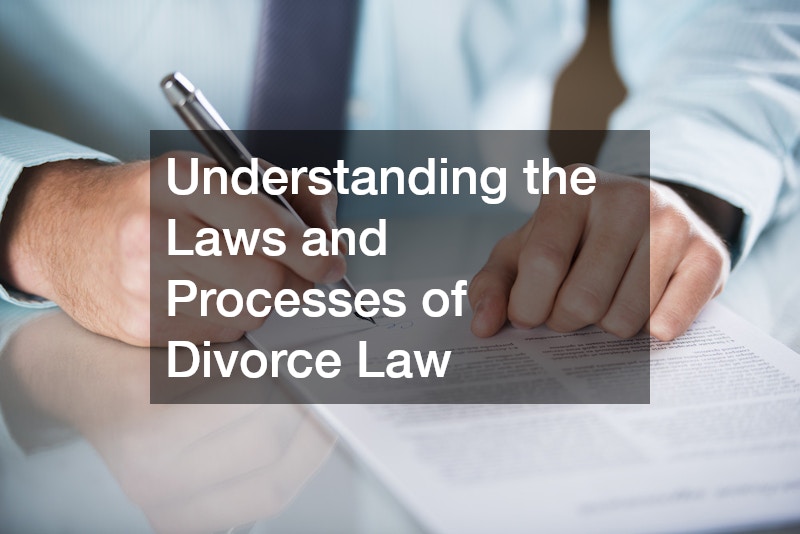Divorce law can be complex and varies greatly depending on jurisdiction, leading to potential confusion for individuals undergoing the procedure. The article explores the fundamental aspects of divorce law, including the types of grounds for divorce and the steps involved in the divorce process, providing a comprehensive guide to understanding how these laws impact individuals and families.
What Are the Common Grounds for Divorce?
No-Fault Grounds for Divorce
No-fault divorce is a legal concept that allows couples to dissolve their marriage without the requirement of proving wrongdoing by either party. The legal implications of no-fault divorce simplify the process, often leading to less contentious proceedings.
Common no-fault grounds recognized by law include irreconcilable differences and irretrievable breakdown of the marriage, which remove the need for blame-shifting within the divorce process.
This approach is seen as fostering a more amicable separation, emphasizing mutual agreement and reducing emotional stress. By facilitating cooperation, no-fault divorce often speeds up the legal process and decreases litigation costs. It is particularly beneficial when both parties agree that the marriage is unsalvageable, allowing them to focus on constructive negotiations over asset division and child custody.
Fault-Based Grounds for Divorce
In contrast, fault-based divorce requires one party to prove the other’s misconduct as the reason for the marriage breakdown. Common grounds include adultery, desertion, and cruelty, which necessitate evidence of wrongdoing. Such grounds can influence decisions regarding alimony, asset distribution, and custody arrangements.
The complexity of fault-based divorces often results in prolonged litigation, as each party may need to gather substantial evidence and witness testimonies to support their claims. Despite this, some individuals opt for this path to demonstrate the validity of their grievances and to potentially gain favor in court rulings. Fault-based grounds might also impact moral standing and public perception, which can be important for those concerned with reputation.
Differences Between State Laws
Grounds for divorce can vary significantly between states in the U.S., reflecting cultural, political, and historical differences. Some states exclusively recognize no-fault divorces, while others maintain both fault and no-fault options. It’s crucial for individuals to understand these variations as they directly impact legal strategy and outcomes.
For example, a state like California operates exclusively on no-fault grounds, whereas New York allows both fault and no-fault divorces. These differences can dictate the duration, complexity, and financial implications of the divorce process. Selecting the appropriate grounds, therefore, requires careful consideration of the specific laws governing the state of residence.
How Does the Divorce Process Work?
Filing for Divorce
The initial step in the divorce process is filing, which involves the selection of the correct jurisdiction and the submission of necessary paperwork. It’s crucial that individuals determine their eligibility to file for divorce in their chosen state, as residency requirements can differ. Once jurisdiction is established, the petitioner must complete and submit a divorce petition to the court, officially initiating the process.
This document outlines the grounds for the divorce as well as other relevant issues such as child custody, support, and property division. The filing process requires meticulous attention to detail to ensure that all necessary legal documents are completed accurately and submitted on time. Failure to meet these requirements can result in significant delays or even dismissal of the case.
Mediation and Court Proceedings
Mediation is frequently employed to help divorcing parties reach agreements on contentious issues outside of court. It involves a neutral third-party mediator who facilitates discussions, encouraging compromise and collaboration. The success of mediation often hinges on the willingness of both parties to negotiate in good faith toward a mutually beneficial resolution.
When mediation fails, court proceedings become necessary, shifting decision-making to a family court judge. Court proceedings are typically more adversarial, requiring formal presentations of evidence and legal arguments. These proceedings can be lengthy and costly, often adding stress and uncertainty to the divorce process.
Finalizing the Divorce
The finalization of a divorce occurs when the court issues a divorce decree, marking the official end of the marriage. This decree outlines the terms of the divorce agreement, including property distribution, spousal support, and arrangements related to children. A critical step post-finalization involves updating personal legal documents, such as wills and power of attorney, to reflect the new marital status.
Conclusion
Recognizing the differences in divorce laws across states enables individuals to make informed decisions, contributing to a more streamlined and less stressful experience. Seeking legal advice early in the process can offer valuable guidance and ensure that one’s rights and interests are thoroughly protected. Ultimately, the divorce process is deeply personal, with outcomes that influence emotional, financial, and familial aspects of life, underscoring the importance of a comprehensive understanding of applicable laws and procedures.
“
.
